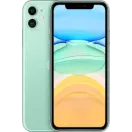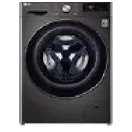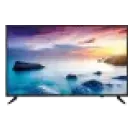Navigating the world of TV brands can be daunting, especially when global leaders like LG, Samsung, and Sony compete for the top spot. Each of these brands offers unique features, design philosophies, and technological advancements, setting them apart from the rest. In recent years, LG has pioneered OLED technology, while Samsung has remained steadfast in its commitment to QLED technology and its smart ecosystem. On the other hand, Sony maintains its unrivalled reputation in colour accuracy and impressive designs.
The LG vs Samsung vs Sony TV debate continues to test allegiances and split opinions as consumers seek to invest in a product that assures them of the best viewing experience. The ‘best’ TV brand is subjective and depends on your expectations, preferences, and requirements. We look closer at the TVs the three brands offer and if any companies can truly stake their claim as the superior TV brand.
Features offered by the three top brands
- Display technology: LG is an innovator and a pioneer in OLED technology, offering impeccable black levels and ultra-thin panels. This makes your viewing experience vivid and enjoyable. On the other hand, Samsung has been at the forefront of developing QLED technology, which guarantees vibrant colour reproduction, deep contrasts, and incredible brightness. Sony, which also offers OLED TVs, surges ahead of other brands regarding colour accuracy and sound integration. The Triluminos display of Sony TVs provides a broader colour range and clarity.
- Refresh rate: Among all the three brands, Sony reduces motion blur even in its base models with low refresh rates, thanks to the MotionFlow technology. This gives the brand the upper hand in the Samsung TV vs Sony TV vs LG TV debate.
- Operating system: LG employs the intuitive webOS platform in its TVs. Its slick and easy-to-use interface makes navigation simple, while you can customise the bar according to your preference. Samsung, meanwhile, uses Tizen OS, which is also user-friendly, and the Ambient Mode feature lets the TV blend seamlessly into your living space. However, Sony’s Android TV is arguably the best operating system on the market, which gives you direct access to many apps via the Google Play Store. You also get Chromecast support natively built-in, along with other services that form a part of the Google ecosystem.
Audio performance
Let us now look at the LG vs Sony vs Samsung TV debate in terms of audio performance. In its upper mid-range and high-end TVs, Sony uses the Acoustic Surface Audio technology, where the screen produces sound. This results in more direct and immersive soundscapes. Furthermore, the company offers Dolby Atmos support, providing an enveloping, theatre-like experience.
On the other hand, Samsung integrates the Object Tracking Sound (OTS) technology in its premium models. This technology uses multiple speakers to align the audio with on-screen action, creating a dynamic auditory perception. The Q-Symphony technology employed by Samsung further harmonises soundbar and TV speakers for richer sound output.
Similarly, LG uses Dolby Atmos technology in its mid-range and premium TVs. The company also partners with high-end audio brands, such as Meridian, to offer soundbars, resulting in booming and immersive audio.
Sony comes out on top in terms of audio capabilities thanks to its innovative sound-from-screen technology. However, this technology is only available in high-end Sony TVs; if you buy a budget or mid-range TV, you will find little difference in TVs from all three brands.
Picture quality
The defining comparison in the Samsung TV vs Sony TV vs LG TV debate is arguably the picture quality. Sony employs the Triluminos display technology, significantly improving colour accuracy, depth, and realism. Its X-Reality Pro Engine, used across budget and mid-range TVs, sharpens details in real time.
Samsung’s QLED TVs are top-rated for their vibrant and bright displays due to Quantum-dot technology. This also results in punchier colours and impressive contrast levels. The company also employs the anti-reflective technology, which ensures minimal glare.
On the other hand, LG’s OLED TVs are renowned for their perfect blacks and infinite contrast ratio, delivering a mesmerising cinematic experience. The TVs also use AI-drive Alpha processors, which upscale content to provide high-quality visuals.
Each brand has its high points when it comes to picture quality. Sony gets points for colour accuracy, Samsung shines in brightness, and LG outscores both brands regarding deep blacks.
Which is the better TV brand: LG vs Samsung vs Sony TV
In the end, in the Samsung TV vs Sony TV vs LG TV comparison, each brand has its strengths, and the choice comes down to individual preferences and requirements. While Samsung’s QLED TVs are exceptional for their bright and vibrant displays, Sony’s expertise in colour science allows the company to offer TVs that naturally reproduce colours. Sony TVs also employ powerful processors that upscale content, catering to those who prioritise true-to-life visuals.
On the other hand, LG’s OLED TVs remain popular for their deep blacks and infinite contrast, making them ideal for late-night binge-watching sessions. Before selecting a brand, you must consider factors like the viewing environment, content preferences, and your budget.
Feature |
Sony |
Samsung |
LG |
Display technology |
OLED and LED |
QLED and Neo QLED |
OLED, NanoCell, LED |
Picture quality |
High color accuracy and clarity |
Bright displays, vibrant colors |
Deep blacks, excellent contrast |
Smart TV OS |
Google TV / Android TV |
Tizen OS |
WebOS |
Audio quality |
Acoustic Surface (vibrating screen) |
Dolby Digital Plus, Object Tracking |
Dolby Atmos, AI Sound Pro |
Gaming features |
VRR, ALLM, Game Mode |
Game Bar, Motion Xcelerator |
VRR, ALLM, HGiG |
App ecosystem |
Wide app compatibility with Google TV |
Strong selection via Tizen Store |
Intuitive, seamless WebOS experience |
Design |
Slim, premium design |
Sleek with various stand options |
Minimalistic with slim bezels |
Price range |
Higher-end, premium pricing |
Mid to premium range |
Competitive pricing across models |














